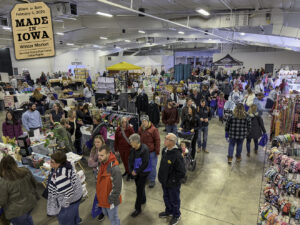Selling art is both a creative and strategic endeavor. Whether you’re a painter, sculptor, photographer, or maker, success lies in understanding your audience, presenting your work effectively, and building meaningful relationships. Follow these organized, actionable steps to thrive in selling your art.
1. Define Your Brand and Story
Art is personal. Buyers connect with the artist as much as they do with the artwork. Share your unique story and inspiration to make your work relatable and desirable.
- Tip: Highlight your creative process, the meaning behind your work, and what fuels your creativity. Authentic storytelling makes your art memorable.
2. Build a Professional Online Presence
In today’s digital-first world, a strong online presence is essential for showcasing and selling art.
- Website: Create a clean, easy-to-navigate website featuring your portfolio, artist bio, and contact information. If possible, include an online store.
- Social Media: Use platforms like Instagram, Facebook, and Pinterest to share your work consistently. Post high-quality visuals and use relevant hashtags to grow your audience.
- Online Marketplaces: Sell through platforms like Etsy, Saatchi Art, or Society6, which cater to different niches.
3. Choose the Right Sales Channels
Explore multiple avenues to sell your art and reach your target audience.
- Online Platforms: Leverage your website or art-specific platforms like Saatchi Art.
- Social Media: Engage followers by showcasing your creative process and finished pieces on platforms like Instagram or TikTok.
- Local Markets and Events: Participate in art fairs, pop-ups, and community markets to meet buyers face-to-face.
- Gallery Representation: Partner with galleries for exhibitions and access to their clientele.
- Commissions: Offer personalized pieces for clients seeking custom work.
4. Create a Standout Portfolio
A professional portfolio is your visual résumé. Showcase your best work with:
- High-quality images of each piece.
- Descriptions, including dimensions, materials, and inspiration.
- An organized format, either digital or physical, for easy presentation.
5. Engage Locally and Build Relationships
Community connections can boost visibility and credibility.
- Participate in Local Events: Farmers markets, art fairs, and pop-ups provide opportunities to interact with buyers.
- Collaborate with Businesses: Display your art in coffee shops, restaurants, or boutiques to reach a wider audience.
- Network: Join local art groups, attend gallery openings, and connect with other artists to exchange ideas and opportunities.
6. Price Your Art Strategically
Pricing can make or break a sale. Strive for a balance that reflects your effort and aligns with market expectations.
- Consider These Factors: Material costs, your time, and current demand.
- Tip: Research similar artists to find a competitive price point.
- Invest in Presentation
How you showcase your art can significantly impact its appeal.
- Photography: Use high-quality images for online listings.
- Framing and Display: Professional framing or creative displays enhance your art’s value.
- Packaging: Use secure and attractive packaging for a positive buyer experience.
8. Offer Multiple Purchase Options
Cater to different buyer preferences to increase sales.
- Originals: Premium, one-of-a-kind pieces.
- Prints: Affordable alternatives for budget-conscious buyers.
- Merchandise: Items like calendars, mugs, or tote bags featuring your art.
9. Market Your Art Consistently
Consistency is key to staying visible and relevant.
- Email Newsletters: Share updates about new work, events, and promotions.
- Social Media Marketing: Post regularly and engage with your followers.
- Content Marketing: Create blogs, videos, or behind-the-scenes posts to deepen connections with your audience.
- Paid Ads: Use social media ads to reach new potential buyers.
10. Build Loyalty Through Exceptional Service
Happy buyers often return and refer others.
- Personalize the Experience: Include thank-you notes or updates on their purchased piece.
- Follow Up: Stay in touch through emails or invitations to future events.
11. Gather Feedback and Adapt
Stay open to improvement by listening to buyers and analyzing your sales.
- Ask for Feedback: Learn what buyers love and what can be improved.
- Evaluate Trends: Focus on creating more of the styles or subjects that resonate most.
12. Stay Passionate and Persistent
Selling art takes time and effort, but the journey is worth it. Celebrate small wins, learn from setbacks, and keep refining your craft.
By combining creativity with a solid business strategy, you can build a sustainable and rewarding career as an artist. Selling art isn’t just about transactions; it’s about creating
Need Help? If you’re looking for guidance on marketing or selling your art, I’d love to help you craft a personalized plan to share your work with the world!




